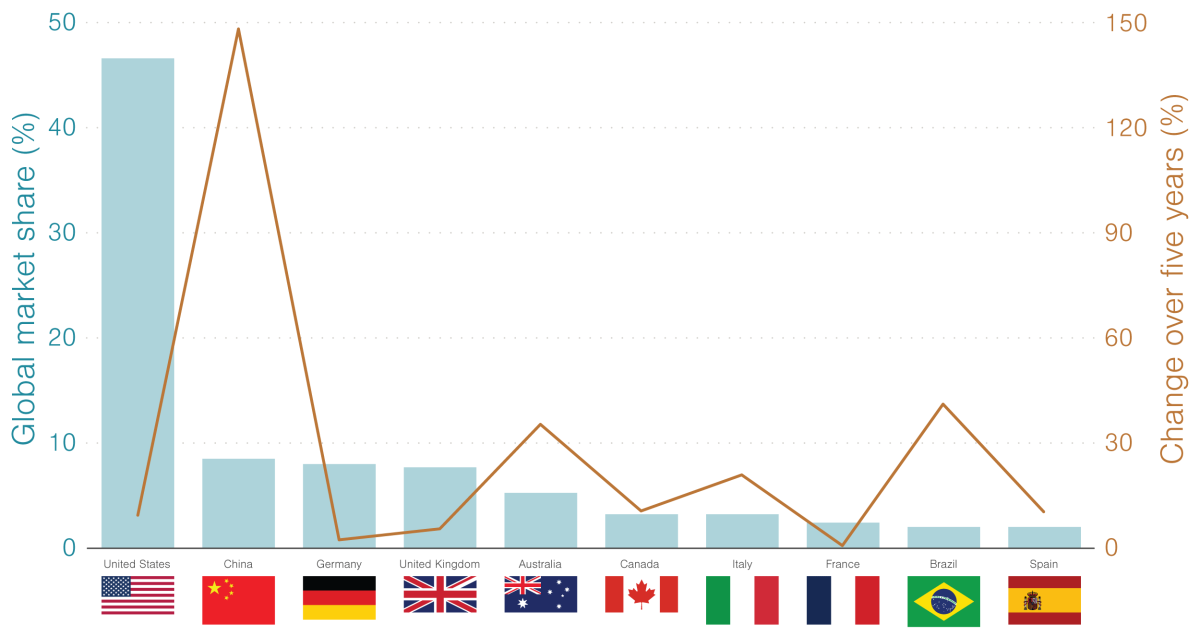In Graphic Detail: China’s Burgeoning Cruise Industry Is Booming
With marketing and government support, China has become the world’s second-largest cruise-consuming nation.
Article body copy
For many, the concept of a cruise conjures images of North Americans in Hawaiian shirts sightseeing in the fjords of Alaska and the bays of the Caribbean or Europeans in luxe linens exploring the Mediterranean coast. For decades, cruises were most popular among these demographics. But travelers in China have developed an appreciation for vacations at sea, and over the past dozen years, the country’s cruise market has exploded.
Globally, cruise tourism has grown rapidly over the past four decades, with most tourists coming from the United States and Europe. But new markets have emerged in other regions, including China, which recorded over two million cruise tourists in 2016. By 2018, that number had jumped to nearly five million.
While the United States remains the world’s largest cruise-consuming nation, with almost half of the global market share, China surged to number two on this list in 2018. A new study out of Shanghai Maritime University found that in just five years China’s piece of the global cruise market pie increased by a whopping 148 percent—which equates to 8.5 percent of the global cruise tourism market. The researchers attribute the country’s cruise industry growth to marketing and government support.
In taking an in-depth look at nearly 130 of China’s cruise-related policies—many of which support tourism services and the construction of ports, modern cruise terminals, and other facilities—from both national and local government agencies, the researchers concluded that China values and supports the booming cruise industry. For example, between 2010 and 2019, government officials approved permits for the construction of 13 new cruise ports.
More recently, China’s cruise-related policies have focused on supporting domestic cruise ventures, including Chinese-funded ships and locally owned cruise companies. Though, according to the authors, local cruise companies have yet to gain traction. Instead, international cruise lines have deployed ships to be used on Chinese routes. Between 2006 and 2021, China welcomed 34 such cruise ships, and Royal Caribbean International of the United States, Costa Crociere of Italy, and Genting Hong Kong Limited (Star Cruises) began operating cruise lines departing from home ports in the country.
While China’s tourism industry has yet to resume normal operations after the COVID-19 pandemic, the government continues to make plans for the industry. The researchers also expect international cruise companies will resume expansion in China.


